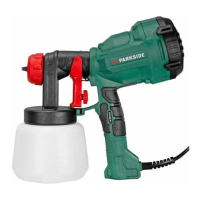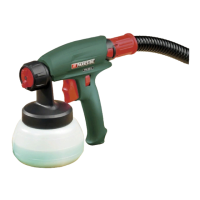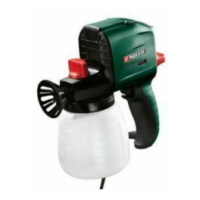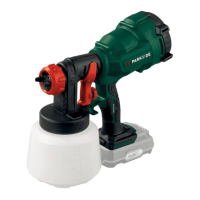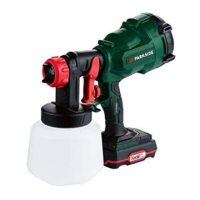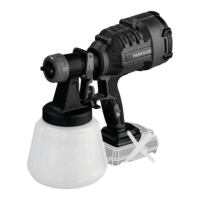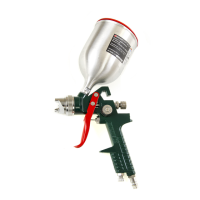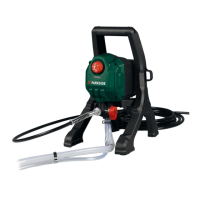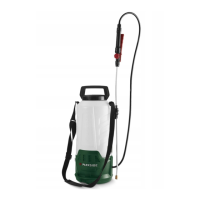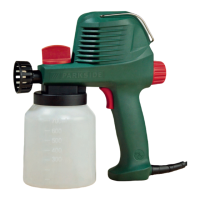PFS 450 A1
GB
│
IE
│
5 ■
■ Do not spray or clean with materials whose
ignition point is lower than 21°C. Use mate-
rials based on water, non-volatile hydrocar-
bons or similar materials. The evaporation of
volatile solvents will cause an explosive environ-
ment.
■ Do not spray near ignition sources such as
static electric sparks, open flames, ignition
flames, hot items, motors, cigarettes or sparks
caused by plugging in/unplugging power
cables or by operating switches. These ignition
sources could ignite a fire in the environment.
■ Do not spray any material if you do not know
whether it is potentially dangerous. Unknown
materials can cause hazardous conditions.
■ Wear additional personal protective equip-
ment such as suitable gloves and a protective
mask/respirator when spraying or handling
chemicals. Wearing appropriate protective
equipment for the conditions reduces your expo-
sure to dangerous substances.
■ Be aware of the potential hazards of the
sprayed material. Take note of the markings
on the container and the manufacturer’s infor-
mation on the sprayed material, including the
instructions to use personal protective equip-
ment. The manufacturer’s instructions are to be
followed to reduce the risk of fire or injuries
caused by poisons, carcinogens, etc.
■ Do not use the spray gun to spray flammable
substances. Do not clean spray guns with flam-
mable solvents.
WARNING!
► Be aware of any dangers inherent to the
spray material and pay attention to all pack-
aging labels and other information provided
by the producer of the substance.
Working procedures
Viscosity
The appliance can process spray materials up to a
maximum 70 DIN/s. (viscosity). You can determine
the viscosity (thickness) of the substance with the
supplied measuring cup using a simplified meas-
uring procedure.
♦ Fill the supplied measuring cup
to the brim
with the spray material.
♦ Remove the measuring cup
from the spray
material and allow the liquid to run out.
♦ Measure the time (in seconds) until the stream
of liquid stops. The resulting value is referred to
as DIN seconds (DIN-s).
♦ If the value is too high, gradually thin the spray
material by adding small amounts of a suitable
thinning agent in and mixing the liquid.
♦ Measure the DIN seconds again. Repeat the
process until you measure a viscosity of less
than 70 DIN/sec.
NOTE
► Do not exceed the maximal viscosity of the
appliance. The spray material must not be
too thick. Otherwise, the appliance might
clog.
► Ensure that the spray material and thinning
agent are compatible. Using an unsuitable
thinning agent may cause clots that clog the
appliance. Never mix synthetic resin
varnishes with cellulose thinners.
► To find out which thinning agent is suitable for
your spray material (water, paint thinner),
refer to the manufacturer's notes provided
with the spray material.
► Granular products and products containing
solids must not be sprayed. Their abrasive
effect will shorten the service life of the pump
and valve.
Preparing the surface
♦ Carefully cover a large area around the spray
surface. Any surface that is not masked could
become contaminated.
♦ Ensure that the surface is clean, dry and free of
grease.
♦ Polished surfaces should be lightly sanded and
the sanding dust removed.
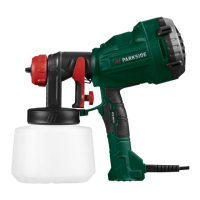
